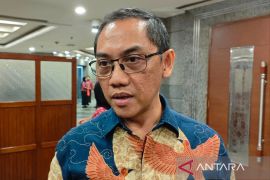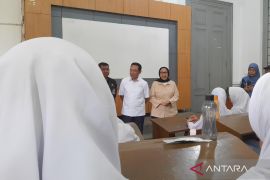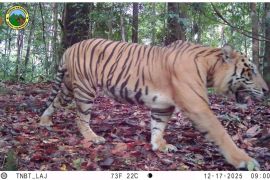"Some 79 new species were found in East Indonesian waters in an expedition conducted by Index Satal last July-August," said Marzan during a video conference on the US - Indonesia science and technology partnership, highlighting a 2010 joint oceanic exploration project.
Marzan said the marine biota were found at a depth of 6,000 meters under the sea level with sophisticated instruments by Indonesian and US scientists during the expedition with the US ship, the Okeanos, he added.
"We would not have been able to do this expedition alone, the more so as the exploratory activity took place 6.000 meters below sea level. That`s why we needed to cooperate with the US National Oceanic and Atmospheric Administration (NOAA) in conducting this exploration," he said.
He added the Okeanos had sophisticated and complete facilities that enabled the researchers to see underwater life in the ocean.
"The equipment to support the research was too expensive for Indonesia and it is not easy to enable people to work 6,000 meters below sea level under a pressure of 600 atmospheres," he added.
The BPPT chief also said other advantages of the Okeanos included the application of the real-time method whereby video images taken at a depth of thousands of meters below the sea ace were directly transmitted to scientists on board the Okeanos.
"Besides taking pictures and video footage of sea biota on the bottom of the sea, the ship`s equipement can send the pictures and video images to expedition members on land. So we can see what the scientists see under the sea directly. It was extraordinary." he said.
In relation to the contribution of RI`s Baruna Jaya ship in the expedition, Marzan said the ship took part in taking sample of sea biota at a depth of 1.000 meters below the sea surface. The expedition lasted 30 days and was participated in by 32 scientists and engineers, two of them were NOAA researchers.
Meanwhile, Ridwan Djamaluddin, a BPPT deputy chairman, said the process to name the new-found species would take time in order to avoid naming errors.
"Taxonomy needs time which is not short, lest we give the wrong names to them. So they are still researching in Bandung Institute of Technology (ITB) and Marine and Fisheries Research Board (BRKP). I hope they can be published before May," he said.
Besides the sea biota expedition, it was also conducted a research on the presence of volcano under the sea and found that there was no photosynthesis process in 200 meters above the sea bottom because the sunshine couldn`t reach it, he added.(*)
Editor: Aditia Maruli Radja
Copyright © ANTARA 2011










